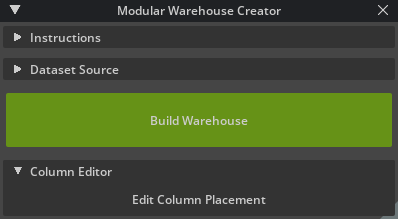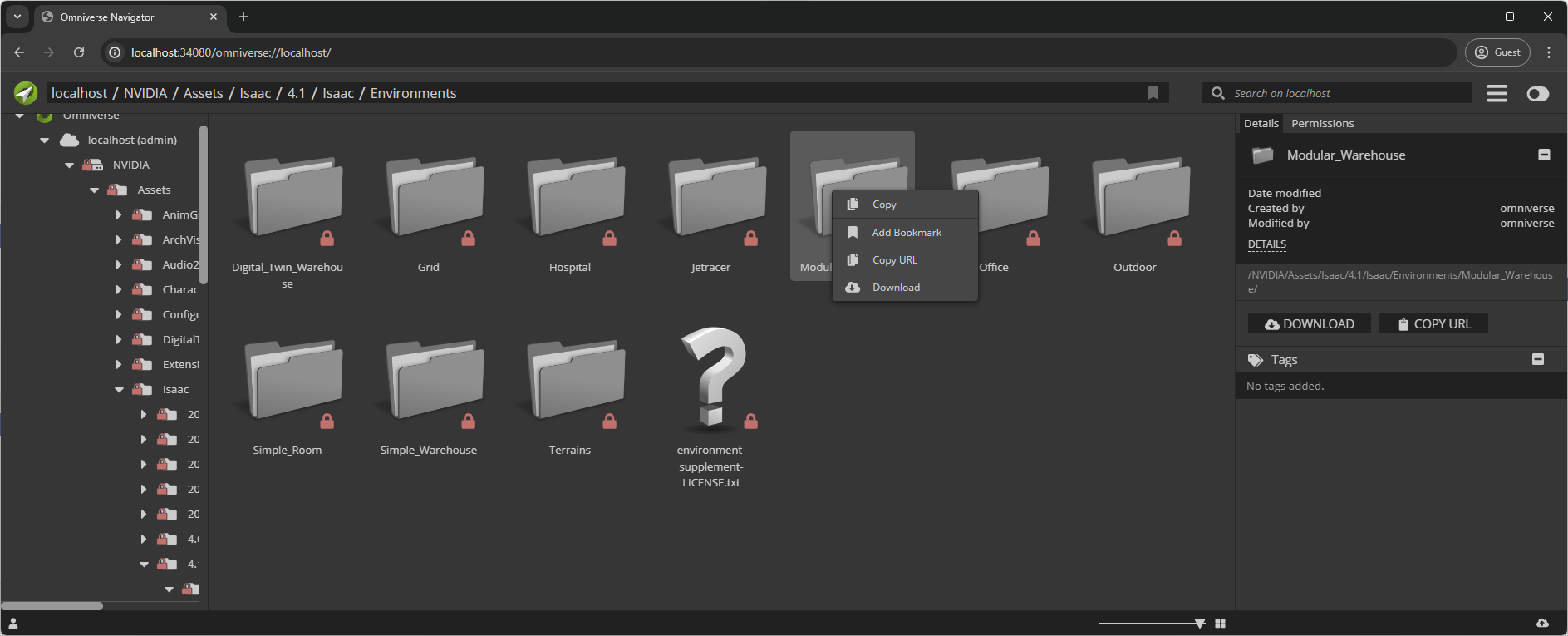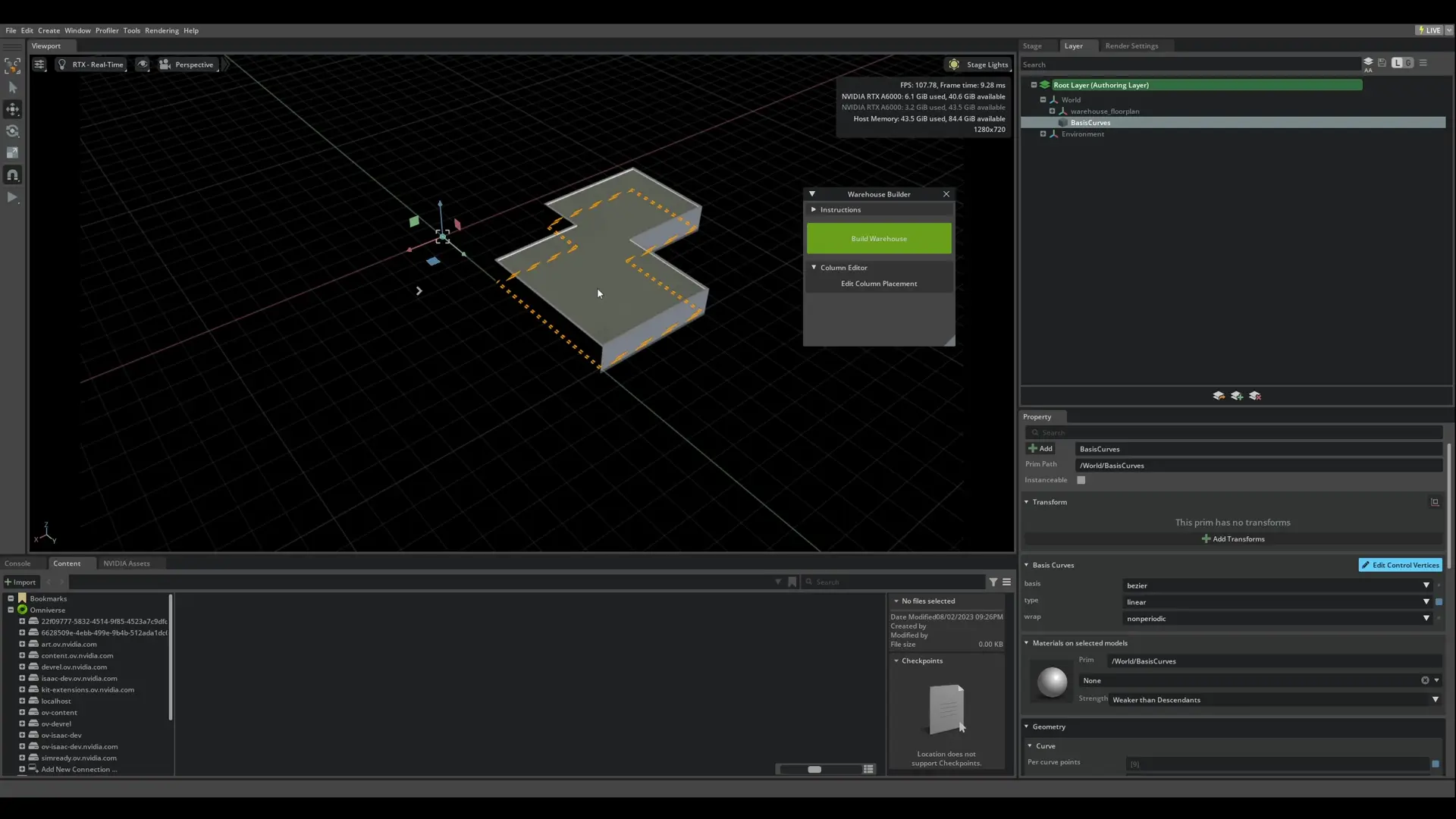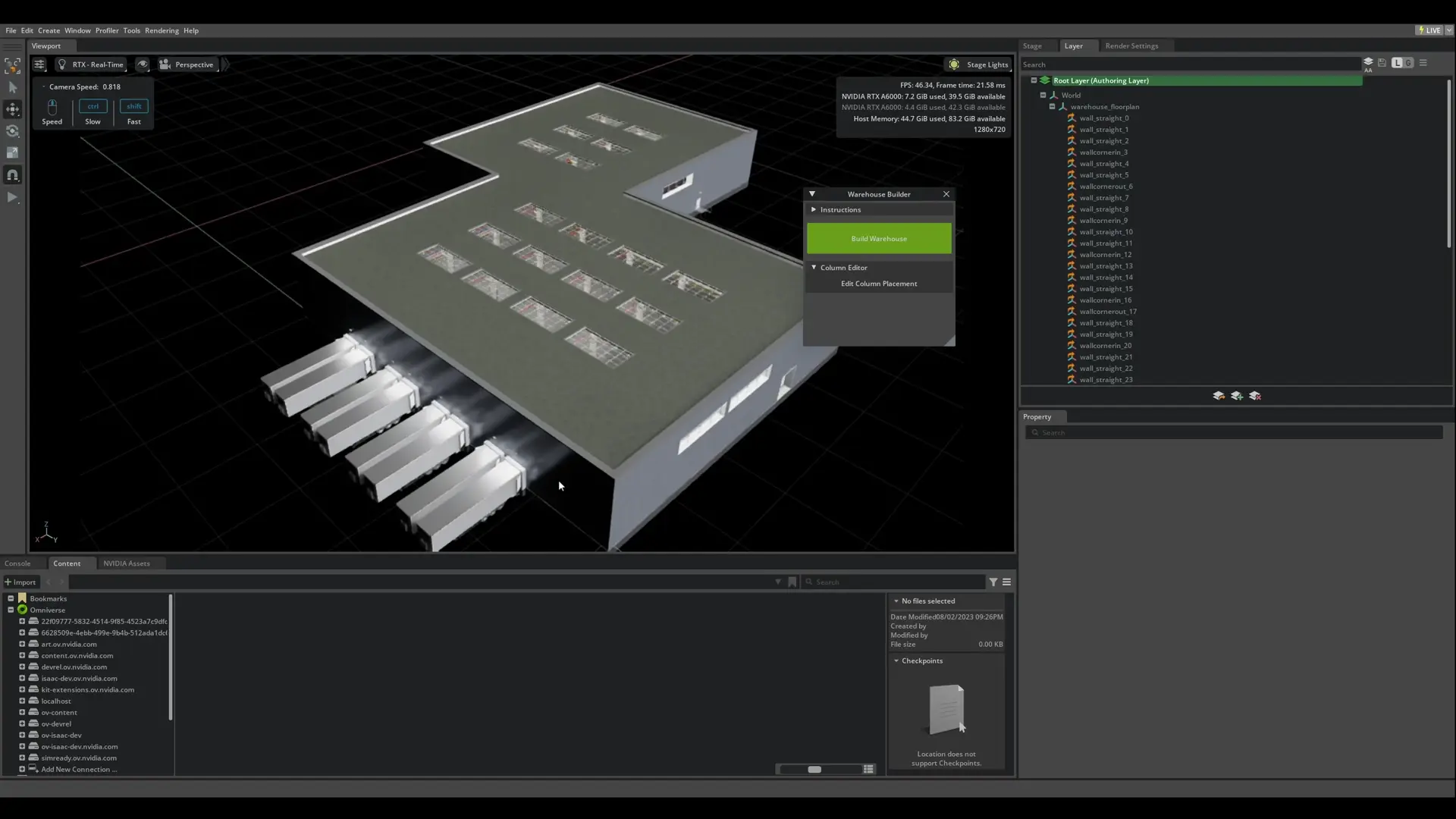Warehouse Creator Extension#
The warehouse Creator Extension uses the new Modular Warehouse Assets to build a custom shape warehouse.
Installing and Enabling the Extension#
The extension can be installed/enabled by:
Navigating to Window > Extensions Manager from the top-level menu
Searching for Warehouse Creator in the text field of the Extension Manager window, to reveal the
omni.warehouse_creatorresult.Clicking on the Install or Update button if not previously installed.
Toggling to enable the extension and checking the autoload checkbox if you like.
How to Use#
Start by navigating to Tools > Modular Warehouse Creator. Verify that you see:
In the Instructions tab, there is a brief description on how to use it.
Improving Load Time#
The Dataset Source tab contains a configuration to provide a location to use for the warehouse dataset. By default it automatically pulls from the Isaac Sim cloud. Because the tool only downloads the assets from the cloud the first time they are used, it may result in long wait times while the asset is loaded. To reduce this time, you can download the assets locally and update your assets location to the local path.
On your Nucleus (for example, localhost), navigate to
[Isaac Sim Assets Path]/Isaac/Environments/. This can be done through the web browser.Right-click on the folder and click on Download. The file size is 3.7GB.
Extract the zip folder and drag the extracted folder in the desired location on your machine or local nucleus.
On the Warehosue Creator tab, in the dataset source, click on the Folder icon and select the Props folder in the downloaded location (for example, omniverse://localhost/Projects/Modular_Warehouse/Props/).
Now when you create new warehouses, and it will pull assets from this folder location.
Drawing#
To begin the Warehouse Generation, click on Build Warehouse. It places the viewport on build mode. A curve draw dialog will display while in this mode. Do not interact with that dialog as it may disrupt the warehouse creation.
Every click on the viewport gets translated into a segment for your warehouse wall in the draw mode. The warehouse is built in a counter-clockwise order. Start by placing a starting point, and moving your way along the shape you want to make. All points are automatically aligned by the warehouse tile size.
There are two methods to finish drawing:
Place a final point at the start. It closes the loop and places the center tiles to complete the warehouse.
If last point added is aligned with the first, Finish automatically closes the drawing and the warehouse interior is built.
Note
The points must form a perimeter of the warehouse shape. The builder does not handle crossing lines during warehouse generation.
The UI prevents you from placing two points too close to each other. To place the closing point, you can zoom in to the start point and click nearby it. The most effective way of achieving it is by placing it along the start edge opposite to the edge direction, as shown in the demonstration video.
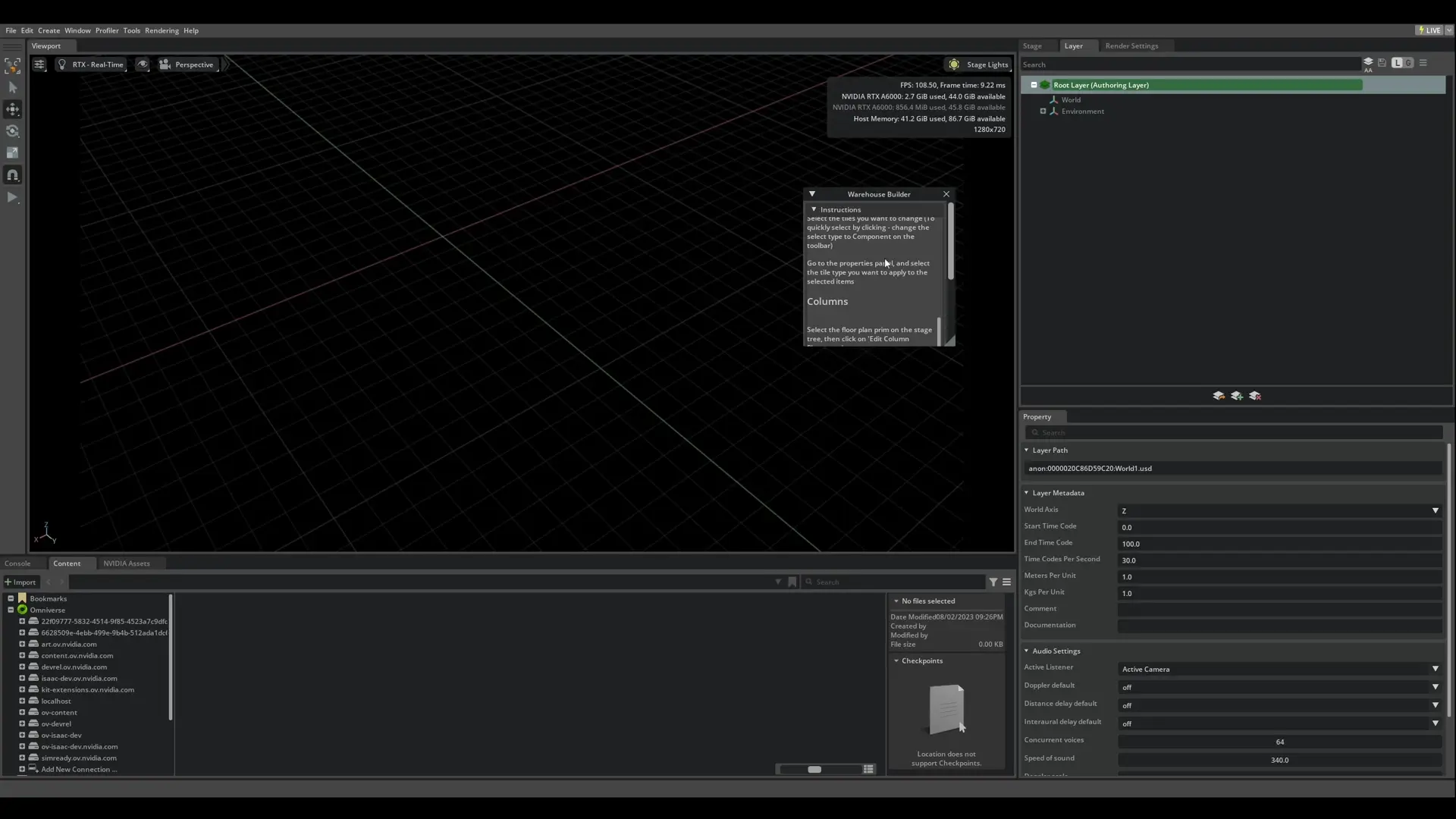
Styling#
Most warehouse blocks have a selection of styles to choose from. By selecting the blocks, on the Property panel you can pick the style you want to use for that Tile. Each style may serve a different purpose in a warehouse. For example, like a loading dock, or an access panel.
Note
To facilitate selecting the blocks by clicking at them on the viewport, change the Select Mode by right-clicking the toolbar and set it to Component.
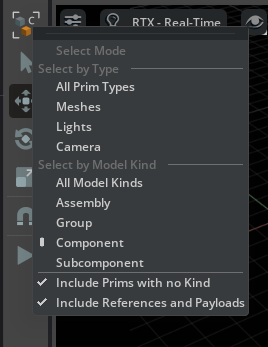
To select the style scroll down in the Property panel, and choose the desired option for each block type. It will affect all selected blocks of that type.
Block Styles#
- The block styles are split by the type of blocks, which can vary from straight walls, corners in and out, or a center piece.

Editing Column Placement#
Every block’s internal corner contains a quarter of a column to it. By combining all adjacent blocks, a column is formed through all the sub-components. Figuring out which components to enable or disable when adding or removing a column can become easily cumbersome. To facilitate this effort, there is the column Placement editor. To use it, select the floor plan prim, and then click on Edit Column Placement on the warehouse creator window. This puts the editor in a column placement mode. The ceiling and details of the warehouse are hidden, and the floor plan with the columns shows.
By clicking on a column, it switches from “Enabled” to “Disabled” and vice-versa. “Enabled” columns are displayed in their default materials and appearance, while disabled columns are displayed in a translucent green. You can select multiple at once by click-dragging on the viewport. To enable or disable all columns, you can push the corresponding button in the UI. The Flip All button will reverse the enabled status in all columns. When you are done with column edit, Click Confirm to save your current selection. To revert to how it was before entering editing mode, click Cancel.
